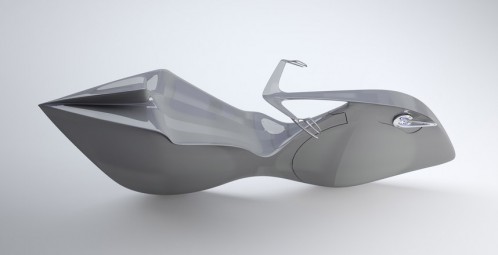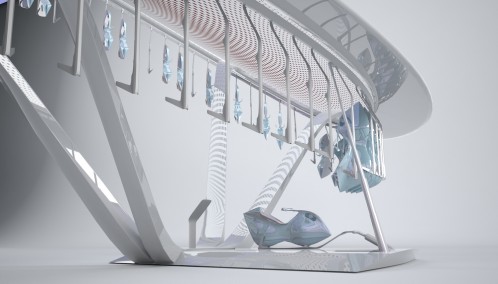 My post about Eric Birkhauser’s Petal Velomobile concept generated some good discussion earlier this year. The architect’s latest project, ZIPcycle, is a work in progress that will be part of a larger project that he is working on… a book on active transit systems. This time around, in addition to a sleek recumbent HPV, he is designing infrastructure to support it. The HELIOtrope concept is one part of that, “a dispensary for a ZIPcycle sharing program.” The overhead storage structure has two access points, and racks for eighty ZIPcycles (or standard bikes). It could even charge electric assist ZIPcycles as they are up in the air waiting for the next user to check them out.
My post about Eric Birkhauser’s Petal Velomobile concept generated some good discussion earlier this year. The architect’s latest project, ZIPcycle, is a work in progress that will be part of a larger project that he is working on… a book on active transit systems. This time around, in addition to a sleek recumbent HPV, he is designing infrastructure to support it. The HELIOtrope concept is one part of that, “a dispensary for a ZIPcycle sharing program.” The overhead storage structure has two access points, and racks for eighty ZIPcycles (or standard bikes). It could even charge electric assist ZIPcycles as they are up in the air waiting for the next user to check them out.
I encourage you to read more about the idea behind the ZIPcycle, and the HELIOtrope structure, on Eric’s website. As I mentioned earlier, this is a work in progress not a fully developed concept, so I am sure that he would welcome any comments or suggestions. Let him know what you think about the feasibility of the concept in the comments section below.




Leave a Reply to Eric Birkhauser Cancel reply